
The Dean Cemetery is a historically important Victorian cemetery north of the Dean Village, west of Edinburgh city centre, in Scotland. It lies between Queensferry Road and the Water of Leith, bounded on its east side by Dean Path and on its west by the Dean Gallery. A 20th-century extension lies detached from the main cemetery to the north of Ravelston Terrace. The main cemetery is accessible through the main gate on its east side, through a "grace and favour" access door from the grounds of Dean Gallery and from Ravelston Terrace. The modern extension is only accessible at the junction of Dean Path and Queensferry Road.
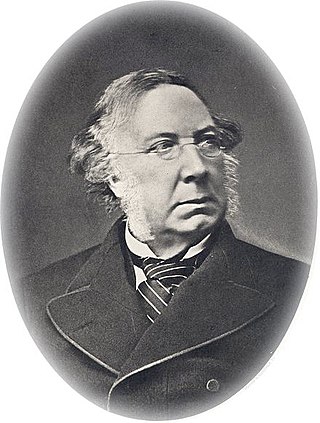
Henry Glassford Bell was a Scottish lawyer, poet and historian.

Old Kilpatrick, is a village in West Dunbartonshire, Scotland. It has an estimated population of 4,820. It belonged to the parish of Old Kilpatrick which itself was only a few thousand people strong.

David Welsh FRSE was a Scottish divine and academic. He was Moderator of the General Assembly of the Church of Scotland in 1842. In the Disruption of 1843 he was one of the leading figures in the establishment of the Free Church of Scotland.

Robert Gibb RSA was a Scottish painter who was Keeper of the National Gallery of Scotland from 1895 to 1907 and was Painter and Limner to the King from 1908 until his death. He built his reputation on romantic, historical and particularly military paintings but was also a significant portrait artist.
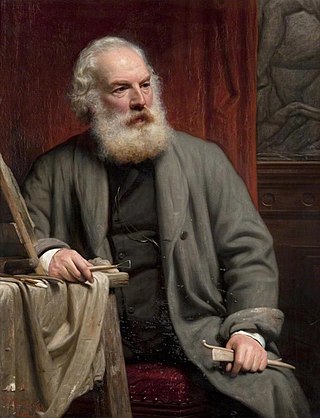
John G. Mossman was one of a number of English sculptors who dominated the production and teaching of sculpture in Glasgow for 50 years after his arrival with his father and brothers from his native London in 1828. His father William Mossman (1793–1851) was also a sculptor, and a pupil of Sir Francis Chantrey. He was trained both by his father and under Carlo Marochetti in London.
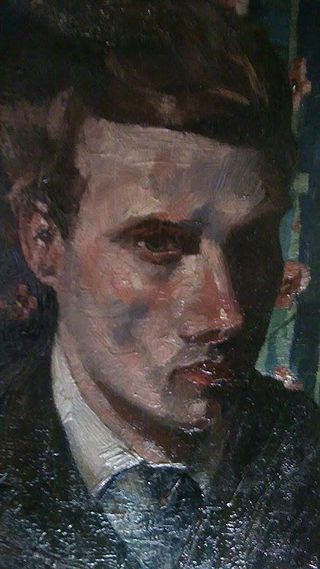
John Quinton Pringle was a Scottish painter, influenced by Jules Bastien-Lepage and associated with the Glasgow Boys.

Captain Thomas Crawford or Thomas Craufurd (1530–1603) of Jordanhill was a trusted confidant of Henry Stuart, Lord Darnley, husband of Mary, Queen of Scots and a retainer of the Matthew Stewart, 4th Earl of Lennox. He famously planned the assault and led a small force of 150 men in 1571 that scaled the cliffs and embattlements to expel the castle garrison loyal to Catholic Queen Mary from Dumbarton Castle. Six years later, he became Provost of Glasgow, establishing a bursary for a student at the university and saving the cathedral from destruction.

Thomas M'Crie was a Presbyterian minister and church historian. He was a Scottish Secession minister who joined the Free Church of Scotland and served as the Moderator of the General Assembly to that church 1856/57.
Marshall Buchanan Lang TD was a Church of Scotland minister and author.

John Marshall Lang was a Church of Scotland minister and author. He served as Moderator of the General Assembly in 1893 and later became Principal of the University of Aberdeen in 1900.
Events from the year 1833 in Scotland.
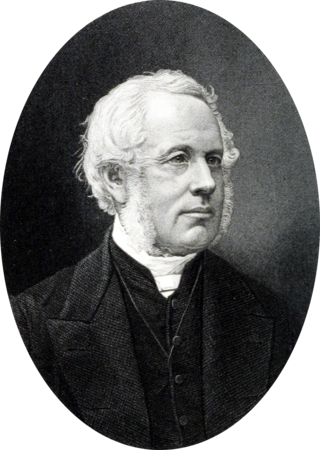
Robert Buchanan (1802–1875) was a Scottish Presbyterian minister and historian who served as Moderator of the General Assembly to the Free Church of Scotland in 1860/61. He was one of the leading figures in the Disruption of 1843.
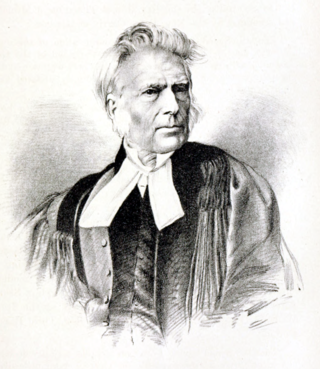
Michael Willis (1799-1879) was a Scottish minister of the Free Church of Scotland who emigrated to Canada and became Principal of Knox College, Toronto. A prominent campaigner for the abolition of slavery he was involved in the Canadian end of the Underground Railway. He was Moderator of the General Assembly for the Presbyterian Church of Canada in 1870.

Archibald Scott (1837–1909) was a Scottish minister who served as Moderator of the General Assembly of the Church of Scotland in 1896.
Thomas Backhouse Sandwith (1831-1900) was a member of the British consular service in the Levant. He was a Vice Consul in Syria 1857 to 1865, and then Vice Consul in Cyprus between 1865 and 1870. He was Consul in Chania, Crete from 1870 to 1885, in Tunis 1885 to 1888 and Consul-General in Odessa 1888 to 1891.

The Idalion bilingual is a bilingual Cypriot–Phoenician inscription found in 1869 in Dali, Cyprus. It was the key to the decipherment of the Cypriot syllabary, in the manner of the Rosetta Stone to hieroglyphs. The discovery of the inscription was first announced by Paul Schröder in May 1872. It is dated to 388 BCE. The Phoenician inscription is known as KAI 38 and CIS I 89.

The Idalion Temple inscriptions are six Phoenician inscriptions found by Robert Hamilton Lang in his excavations at the Temple of Idalium in 1869, whose work there had been inspired by the discovery of the Idalion Tablet in 1850. The most famous of these inscriptions is known as the Idalion bilingual. The Phoenician inscriptions are known as KAI 38-40 and CIS I 89-94.















